Sunday Nov 16, 2025
Sunday Nov 16, 2025
Thursday, 1 May 2025 00:55 - - {{hitsCtrl.values.hits}}
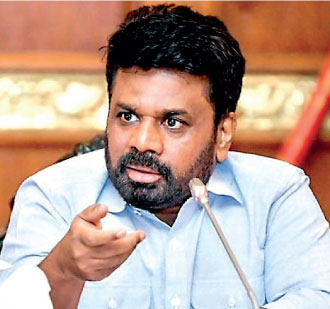
Can AKD outrun the economic storm?
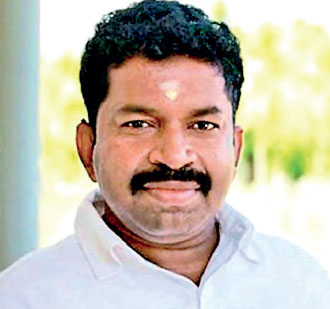
Pillaiyan: Mastermind or Fall Guy?
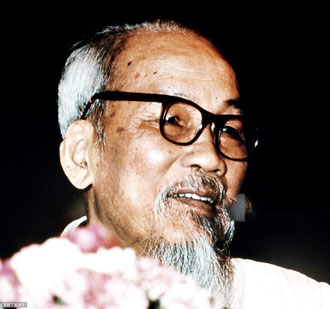
Iconic Vietnamese President Ho Chi Minh
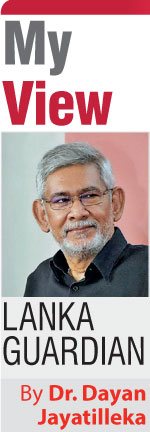 The attack which killed 27 civilians in Pahalgam, Kashmir, was an act of unbridled terrorism. As a country which suffered terrorism, and cross-border, state-sponsored terrorism at that, against civilian targets (passenger trains, bus-stops, elderly worshippers, villages) for decades, Sri Lanka knows in its flesh, what such barbarism is like. Therefore, we cannot but agree with Prime Minister Modi’s pledge to eradicate the perpetrators and strike at their backers. They deserve nothing else.
The attack which killed 27 civilians in Pahalgam, Kashmir, was an act of unbridled terrorism. As a country which suffered terrorism, and cross-border, state-sponsored terrorism at that, against civilian targets (passenger trains, bus-stops, elderly worshippers, villages) for decades, Sri Lanka knows in its flesh, what such barbarism is like. Therefore, we cannot but agree with Prime Minister Modi’s pledge to eradicate the perpetrators and strike at their backers. They deserve nothing else.
But there’s a problem—mixing-up crucial categories. Eradicating terrorists and uprooting terrorism are entirely laudable, but escalation against another state without concrete proof that it is directly involved in or patronised this heinous attack, is something else altogether. Worse, it is brinkmanship with another nuclear power.
In 1984, Shekhar Gupta, at the time the crack reporter of the prestigious India Today magazine, scooped the story, photographs and all, of training camps of Tamil militants, many of whom turned out to be Tiger terrorists, in India. Prime Minister Ranasinghe Premadasa made a fiery speech in parliament, tabling the publication.
Prime Minister Modi’s India is a high-tech superpower, unlike poor Sri Lanka then and now. And yet, it has produced no satellite images, heat signatures, or a shred of empirical evidence to prove its contention that Pakistani state authorities/agencies were in any way responsible for the attack. If such evidence were available surely it should saturate all international media, and be produced at the UN.
Pakistan has called for a neutral, independent inquiry into the attack and promised fullest cooperation. Unresponsive India maintains an ominous silence.
In the absence of anything remotely resembling a smoking gun, the main measure announced by India against Pakistan is unwarranted and irrationally aggressive. India’s retaliation is massive, not proportionate. The suspension of the 1960 Indus Waters Treaty sharing the waters of the Indus river with Pakistan-- an agreement which was undisturbed through three Indo-Pak wars--is a ‘wild’ escalation. The shared waters irrigate Pakistan’s Punjab province ‘bread-basket’ as it were, and India’s “not a drop of water” policy (the phrase is the relevant Minister’s) poses a clear existential threat to Pakistan.
Pakistan’s nuclear deterrent is predicated on the doctrine that it has no defence in depth unlike India, and that an India attack could slice deeply into Pakistan in a manner that a Pakistani strike could not into India, given the latter’s gargantuan size.
India’s uncontrollable rage and unilateralism against an adversarial, nuclear-armed neighbour is bringing nuclear war an inch closer, thereby jeopardising all of us in the subcontinent.
Towards terrorism, the policy of a state should be one of the mailed fist. By contradistinction, the policy towards another state should be one of de-escalation and negotiation, except in self-defense against an attack by that state. If intermediaries are necessary for a negotiated settlement, the UN, US, EU, Russia, Saudi Arabia or a combination would readily play the role.
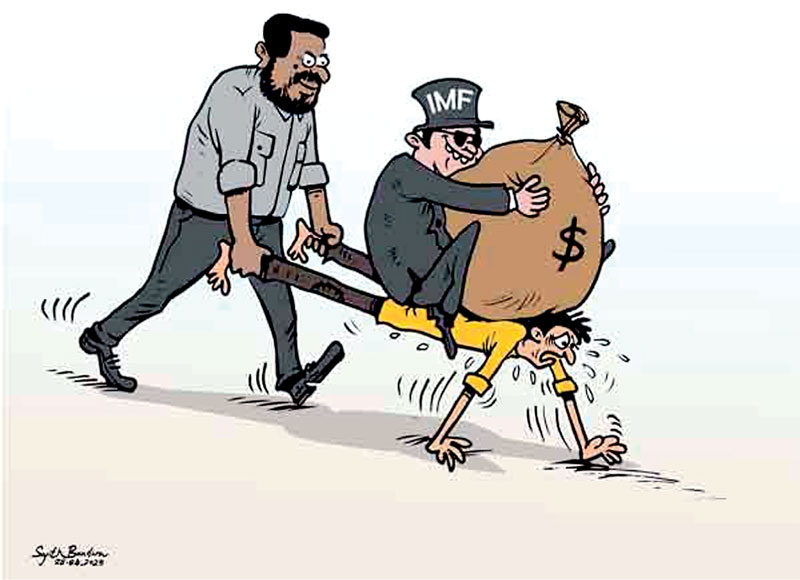
Anura should’ve renegotiated
Anura’s imbalance
President Anura Kumara Dissanayake telephoned Prime Minister Modi, assured him that Sri Lanka “stands with India”, declaring that “the people of Sri Lanka and the people of India are brothers”. It wasn’t clear whether Sri Lanka stands with India in its grief and anti-terrorist resolve --as it should-- or whether Sri Lanka stands with India in all the measures it has taken in response, including the suspension of the 1960 Indus Waters Treaty with Pakistan.
Anura should remember that the people of Sri Lanka are ‘brothers’ not only with the people of India but also with the people of Pakistan who have stood by us for decades. Instead of a pious platitude about ‘peace in the region’, AKD should have urged against any armed conflict between India and Pakistan, and called for negotiations aimed at preserving peace between the two neighbours, both of whom are Sri Lanka’s friends.
We should be networking all non-Indo-Pak nations of SAARC to make a collective appeal to the two adversaries to step away from the brink.
Sri Lanka should also oppose or at least caution against the unilateral suspension of long-standing treaties pertaining to the sharing of something so basic to existence as water.
The alacrity with which Prime Minster Modi and the BJP administration unilaterally suspended the 1960 Indus Waters Treaty, show us the breathtaking folly of President Anura Dissanayake linking us through his recently-signed and as yet undisclosed agreements, in a ‘poly-dependent’ relationship with India including in the domain of fuel and power supplies. Anura’s seven agreements have hooked Sri Lanka up with Bharat like a Hindu devotee dangling from multiple hooks and wires in his back.
Easter massacre: Two conspiracies
Some think there is an Easter Massacre conspiracy and others do not, or rather, they think there was a conspiracy but it has now been solved by the FBI, so there’s no mystery and nothing to investigate. Still others say the conspiracy hasn’t been cracked but we’re getting there with Pillaiyan’s imminent confession.
All those who say the conspiracy has been uncovered or is almost uncovered, are drawing red herrings across the trail.
I think there were two Easter Massacre conspiracies-- and one is being used to cover up the other.
There was a conspiracy which has been resolved by the FBI, but there is another conspiracy that has not. The two conspiracies are:
(I)The operational or kinetic conspiracy.
(II) The causative and cover-up conspiracy.
The operational or kinetic conspiracy consisted of the suicide-bombings by the only type of persons who blow themselves up: Islamist-jihadist terrorists led operationally by Zahran Hashim; a homegrown, wanna-be ISIS local chapter.
But there was another conspiracy in the backdrop. It was both causative and a coverup; a prequel and a sequel. It bookended the Easter Massacre.
It is universally accepted that if the repeated Indian intelligence tipoffs had been shared and acted upon, the massacre could have been prevented; would not have happened. Nilantha Jayawardena wasn’t the only officer/official who failed at one time or another, to act on the information received. Several others have been named. They all belong to one profession, one field—security-- though they wore different institutional hats.
One man failing to sound the alert could be individual criminal negligence which warrants the most severe punishment – but several, all belonging to one broad profession and constituting a cluster? Pure coincidence or grounds to suspect conspiracy?
Why didn’t they share the information both upwards and systemwide? Was there anyone who told them not to? Was there anyone in common in their career backgrounds who was their superior or whom they owed loyalty to—and were likely to take orders from?
Then there’s the surreal phenomenon of state operatives knowing and actually meeting one of the perpetrators, without detaining him, on the day of the multiple bombings.
What also of that strange call to an East Asian country, urging that the attack be claimed at that end?
Why interrupt a post-arrest interrogation by the CID or TID and extract an operative from the investigation process? On whose orders?
Why did ISIS leader Abu Bakr Al-Baghdadi go off-camera at the tail-end of an ISIS video, with only a voice claiming that the attack in Sri Lanka was in retaliation for Christchurch, NZ? Could it have been added-on?
What of the report aired by pro-Hezbollah Al Manar TV in Beirut, showing a Saudi Embassy advisory to stay away from the vicinity of Christian churches on Easter Sunday?
Why attack Christian targets when there was no friction between Muslims and Sinhala/Sri Lankan Christians, unlike between Islamophobic Sinhalese groups and Muslims?
Why was there no manifestation of lethally violent Islamist extremism in Sri Lanka BEFORE the rise of Sinhala-Buddhist extremist organisations and the Aluthgama violence?
Given the strategically decisive wartime alliance especially in the East between Sinhalese and Muslims, and the role of many Muslims, including military officers, in anti-LTTE intelligence and strike operations (e.g., Col. Fazly Lafir commanding officer SF-1), why, how, and from where did anti-Muslim Sinhala-Buddhist organisations emerge postwar, in 2011-2012, well before Zahran’s jihadi enterprise? Was it meant to provoke and invoke?
Economic storm brewing
In 2024 Prof Martin Guzman, former Finance Minister of Argentina, and Prof Jayati Ghosh visited Colombo on the way back from a global conference on debt convened by Pope Francis at the Vatican. Following a public seminar at the SLFI they held separate discussions with the JVP-NPP, SJB and the FSP-PSA, cautioning against the IMF agreement and debt restructuring deal that President Ranil Wickremesinghe had arrived at.
Following these discussions, the JVP-NPP promised the country they’d submit an alternative Debt Sustainability Analysis (DSA) to the IMF. Once elected, they didn’t even try. Instead, Anura appointed the current chairperson of the Ceylon Chamber of Commerce as one of his duo of Senior Advisors on Economics and sent him to negotiate with both the IMF and the private international creditors.
Political economists Prof Howard Nicholas and son Bram, Danusha Pathirana, Dr Kalpa Rajapakse and Shiran Illanperuma criticised Anura’s choice of unalloyed continuity and predicted the negative consequences. Responding in detail in Parliament to President AKD’s address to the nation and to his Budget, Opposition and SJB Leader Sajith Premadasa projected a dire outcome.
Empirical evidence is streaming-in, confirming Anura’s economic folly.
‘...While Sri Lanka’s economic stability is in the making, a glaring imbalance in the nation’s national budget is ringing alarm bells among economists: nearly Rs. 3 trillion has been allocated for debt interest payments in 2025—more than twice the Rs.1,300 billion for public investment.
According to experts, this imbalance would threaten long-term growth and render the economy more vulnerable, despite reforms backed by the International Monetary Fund (IMF).
…Government data reflect a rise in interest payments: Rs.866 billion in 2020 to Rs.2,456 billion in 2023, Rs.2,690 billion in 2024, and estimated Rs.2,950 billion in 2025…
This steep increase on the back of growing debt has created a squeeze on development funds and raised the question of whether the nation is on a sustainable economic path.’ (https://www.sundaytimes.lk/250427/business-times/public-debt-interest-soars-hurt-sls-public-investment-future-596099.html)
Meanwhile the IMF has insisted on hiking electricity rates.
‘…The IMF has told Sri Lanka that consumers must be asked to pay according to the actual cost of generating and distributing electricity, holding the government to a promise it has made.’
(https://www.sundaytimes.lk/250427/news/imf-holds-sri-lanka-to-power-pricing-promise-596457.html)
Apart from the obvious consequences for households, especially for students, there is the prospect of higher costs for factories and other businesses which will either cause a cut in production or be passed on to the consumer in the form of higher prices, which will in turn depress real incomes and the purchasing power of consumers.
In response to Trump’s tariff war, Sri Lankan businesses are not only seeking alternative markets for their products—which is an excellent, long overdue diversification—but are also shifting their ‘bases’.
‘…Sri Lankan companies in mechanical, electrical and plumbing, hydropower, apparel, rubber manufacturing, construction, renewable energy etc. are shifting bases to the East African region and, the larger Indian Ocean region, top officials said. The popular countries are Kenya, India, Nepal and also the Maldives. “To diversify into other destinations is the smart thing to do,” Economics Prof. Sirimal Abeyratne said that Sri Lanka is fast losing export competitiveness to other countries and that it is better to move to those particular countries and trade there…’
(https://www.sundaytimes.lk/250427/business-times/diplomats-negotiate-markets-while-industries-waltz-to-other-regions-596096.html)
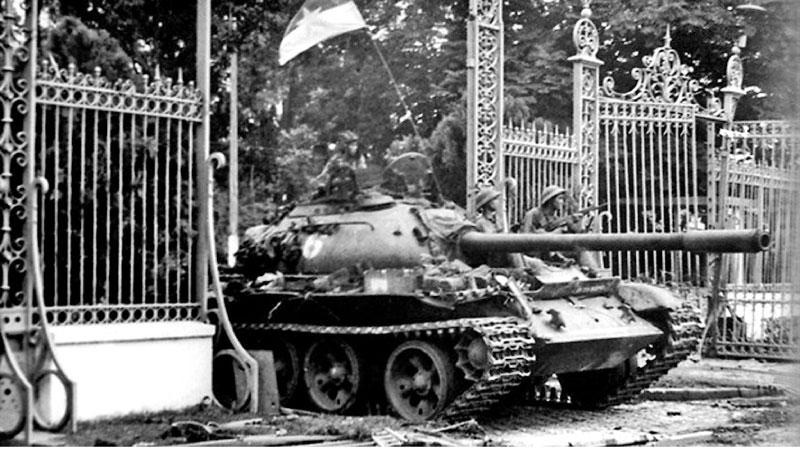
North Vietnamese tank liberates Presidential palace, 50 years ago
If there is a relocation i.e., a flight of production and services, what happens to our employment figures? If employment drops, what about wages and effective demand?
A third of this country’s people either remain poor or are at the risk of poverty, while economic wellbeing remains well below pre-crisis levels:
‘…Poverty levels labelled as “alarmingly high at 24.5 percent” by the World Bank in a report released on April 23 raises concerns about economic wellbeing in Sri Lanka, despite the economy growing steadily after the economic crisis in 2022 “about a third—remains in poverty or is at risk of falling back into poverty,” said David Sislen, World Bank Division Director for Maldives, Nepal, and Sri Lanka.
“… Household incomes, employment and overall welfare remain well below pre-crisis levels.”
…The minimum expenditure per person per month to fulfil the basic needs as per the Department of Census and Statistics (DCS) in February 2025 is Rs. 16,318 which has more than doubled with a 134 percent increase since 2019 which was Rs. 6,966.
…In the annual report (2024) released by World Food Program Sri Lanka “the percentage of children under 5 who are suffering from wasting (low weight-for-age) and stunting (low height-for-age) over the last five years increased, revealing nutritional shortcomings...”‘
(One third of Sri Lankans at risk of poverty - Breaking News | Daily Mirror)
If Anura is smart, rather than merely lucky in his Parliamentary opponents, he will outrun the economic earthquake by swiftly holding Provincial Council elections.
Vietnam’s victory: 50th anniversary
My generation is fortunate in the grandeur of the historic events it has lived through. The main trends of world history were the intersecting, interactive struggle of national liberation vs imperialism, and socialism vs. capitalism. The zenith of the battle between imperialism and national liberation, intertwined with that of capitalism and socialism, was the decisive victory of an Asian nation, mainly rural, over the military forces of the mightiest superpower in history, the USA, 50 years ago this year, on April 30th 1975.
The Vietnamese people under the leadership of the Communist Party of Vietnam, led for decades by Ho Chi Minh --and after his death in 1969 by Le Duan-- and militarily guided by General Vo Nguyen Giap, defeated in succession over 30 years (1945-1975) the Japanese fascists (1945), the French colonialists (1954) and the US imperialists (1975).
Not yet 12, I watched the turning point of the war, the electrifying Tet Offensive of Spring 1968, reported live on TV by Olivier Todd, while traveling through Europe with my parents. (My father covered May ‘68). Aged 18, I watched real-time TV footage while overseas, of the April 30th 1975 triumph and the May 1st parade of the victorious Vietnamese forces.
In late-2009, traveling with President Mahinda Rajapaksa on the first state visit by a Sri Lankan leader to Vietnam, I visited President Ho Chi Minh’s modest residence where he wrote his last testament, saluted Ho Chi Minh’s body in the glass box at his mausoleum with my clenched fist upraised, crawled through the tunnels of Cu Chi, strolled onto the balcony during the official dinner at the president’s palace in Ho Chi Minh City to gaze at the gate which was broken off and rolled over by the North Vietnamese battle-tank with a flag attached on April 30th 1975 --which I had watched on TV with soaring spirits while it happened.
What Vietnam’s victory proved to me as a political scientist is this:
A small nation can fight a foreign power however hegemonic, defeat an intrusive foreign military force however powerful, dislodge a foreign presence however entrenched, and overthrow its ruling comprador local puppets however ruthless, provided a national liberation struggle is waged according to the doctrine of People’s War by an advanced Marxist-Leninist leadership.